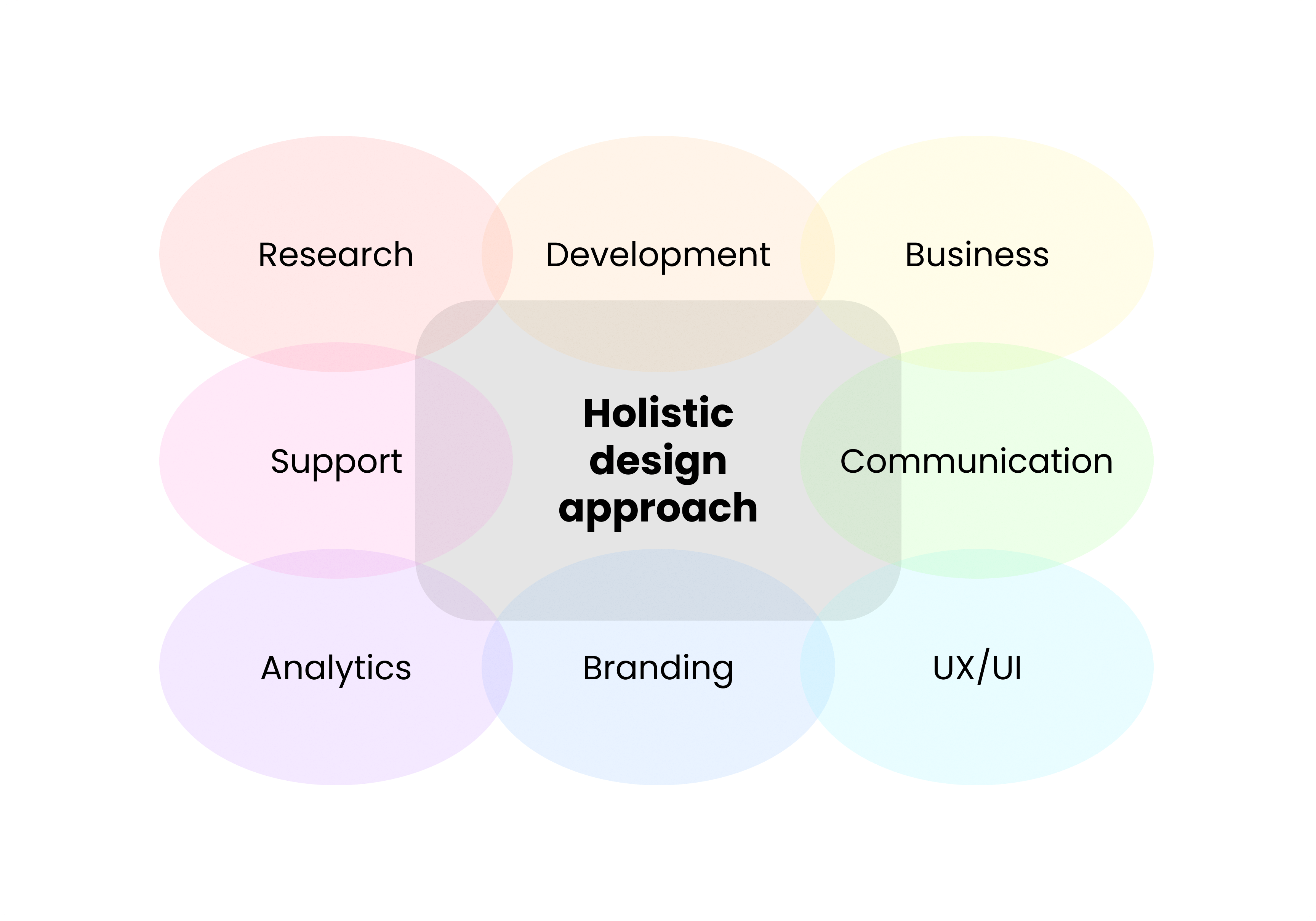Creating exceptional digital products is a multifaceted challenge that extends far beyond aesthetics. It requires seamless integration of design, development, business strategy, analytics, and user insights. Yet, many still view design as merely “making things look good.” This article explores the holistic design approach — a method that unites diverse disciplines and aligns stakeholders to deliver not only beautiful but meaningful, effective, and scalable solutions.
Current state of affairs
Creating high-quality products is no easy task. Design, front-end, back-end, marketing, support, analytics, business processes, legal issues, and more — all these areas require a founder to have a solid understanding, which means finding specialists for each role is crucial.
Yet, many clients still perceive designers as professionals who simply "make things look good" — beautiful visuals, layouts, animations, and so on.
We believe that "making things look good" is just one facet of design, not its core essence.
Design is remarkable because it’s a multidisciplinary profession. You can create brands, design identities or logos, build websites, craft admin interfaces, implement your own designs (using builders or code), focus on client communication to uncover valuable insights, create stunning visuals and animations for social media, analyze data to improve metrics, or strategize how to drive traffic growth — all of which add value to the product.
Ultimately, all these aspects are grounded in the same fundamental principles.
Holistic design approach
Holistic design is an approach where the designer considers all key areas of the product, gathers input from stakeholders, and ensures alignment across all participants in the process.

Pros and cons of the holistic approach
A holistic approach demands a broad perspective, substantial expertise in multiple areas, and deep immersion in the product, business goals, and workflows. What areas does this approach encompass? UX/UI, development, business, communication, branding, analytics, and support. Typically, only a seasoned professional with years of experience can provide such comprehensive coverage.
In return, this approach enables the creation of meaningful, high-quality, and aesthetically pleasing products that effectively solve user problems and deliver measurable results. As a result, it fosters the development of robust design systems, improved workflows, and a stronger company culture.
Example of a holistic design process
Let’s view a product as a system, where the system consists of elements and the connections between them.
Sections, pages, buttons, forms, and controls — all are elements of a system that work together to perform certain functions for the user.
To design a new interface element, a designer have to:
- Receive an idea from management or the founder, analyze it, and determine what the interface could be.
- Understand the task this element fulfills for the user.
- Identify why this element should look and function in a particular way rather than another.
- Consider how this element can be implemented in code and the constraints of feasible solutions.
- Envision how the element might evolve in the future.
- Assess how the element connects to other system components and whether its function is already fulfilled by existing elements.
- Create a design layout that adheres to brand guidelines and showcases various states.
- Present the design to all stakeholders, ensuring alignment across the team.
- Draft detailed requirements for development.
- Provide guidance during the development process and be ready to make adjustments as needed.
Summary
A holistic design approach is a forward-thinking strategy that deeply resonates with users. By embracing this methodology, teams can create innovative, impactful digital products while improving processes, fostering collaboration, and enhancing company culture.